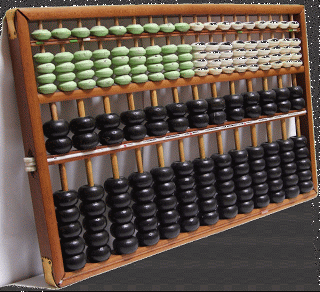Fundamental Analysis
Many people rightly believe that when you buy a share of stock you are buying a proportional share in a business. As a consequence, to figure out how much the stock is worth, you should determine how much the business is worth. Investors generally do this by assessing the company’s financials in terms of per-share values in order to calculate how much the proportional share of the business is worth. This is known as “fundamental” analysis by some, and most who use it view it as the only kind of rational stock analysis.

Fundamental analysis is the process of looking at a business at the basic or fundamental financial level. This type of analysis examines key ratios of a business to determine its financial health and gives you an idea of the value its stock. Many investors use fundamental analysis alone or in combination with other tools to evaluate stocks for investment purposes. The goal is to determine the current worth and, more importantly, how the market values the stock. Fundamentals are typically more closely tied to buy and hold investors, whereby day traders use solely technical analysis and most swing traders use both fundamental and technical stock analysis. Technical analysis is specifically important for swing traders with a very short time horizon (that is, a couple of days or just a few weeks).
The biggest part of fundamental analysis involves delving into the financial statements. Also known as quantitative analysis, this involves looking at
- revenues
- expenses
- assets
- liabilities
and all the other financial aspects of a company. Fundamental analysts look at this information to gain insight on a company’s future performance. A perfect analyst would look at the balance sheet, income statement, cash flow statement and how they all fit together.
When talking about stocks, fundamental analysis is a technique that attempts to determine a security’s value by focusing on underlying factors that affect a company’s actual business and its future prospects. On a broader scope, you can perform fundamental analysis on industries or the economy as a whole. The term simply refers to the analysis of the economic well-being of a financial entity as opposed to only its price movements.
Fundamental analysis serves to answer questions, such as:
- Is the company’s revenue growing?
- Is it actually making a profit?
- Is it in a strong-enough position to beat out its competitors in the future?
- Is it able to repay its debts?
- Is management trying to “cook the books”?
Of course, these are very involved questions, and there are literally hundreds of others you might have about a company. It all really boils down to one question: Is the company’s stock a good investment? Think of fundamental analysis as a toolbox to help you answer this question.
It’s all about earnings. When you come to the bottom line, that’s what investors want to know. How much money is the company making and how much is it going to make in the future.
Earnings are profits. It may be complicated to calculate, but that’s what buying a company is about. Increasing earnings generally leads to a higher stock price and, in some cases, a regular dividend.
When earnings fall short, the market may hammer the stock. Every quarter, companies report earnings. Analysts follow major companies closely and if they fall short of projected earnings, sound the alarm. For more information on earnings, see my article: It’s the Earnings.
While earnings are important, by themselves they don’t tell you anything about how the market values the stock. To begin building a picture of how the stock is valued you need to use some fundamental analysis tools. These ratios are easy to calculate, but you can find most of them already done on sites like cnn.money.com or MSN MoneyCentral.com.
Quantitative and Qualitative
You could define fundamental analysis as “researching the fundamentals”, but that doesn’t tell you a whole lot unless you know what fundamentals are. The big problem with defining fundamentals is that it can include anything related to the economic well-being of a company. Obvious items include things like revenue and profit, but fundamentals also include everything from a company’s market share to the quality of its management.
The various fundamental factors can be grouped into two categories: quantitative and qualitative. The financial meaning of these terms isn’t all that different from their regular definitions. Here is how the MSN Encarta dictionary defines the terms:
- Quantitative – capable of being measured or expressed in numerical terms.
- Qualitative – related to or based on the quality or character of something, often as opposed to its size or quantity.
In our context, quantitative fundamentals are numeric, measurable characteristics about a business. It’s easy to see how the biggest source of quantitative data is the financial statements. You can measure revenue, profit, assets and more with great precision.
Turning to qualitative fundamentals, these are the less tangible factors surrounding a business – things such as the quality of a company’s board members and key executives, its brand-name recognition, patents or proprietary technology.
Quantitative Meets Qualitative
Neither qualitative nor quantitative analysis is inherently better than the other. Instead, many analysts consider qualitative factors in conjunction with the hard, quantitative factors. Take the Coca-Cola Company, for example. When examining its stock, an analyst might look at the stock’s annual dividend payout, earnings per share, P/E ratio and many other quantitative factors. However, no analysis of Coca-Cola would be complete without taking into account its brand recognition. Anybody can start a company that sells sugar and water, but few companies on earth are recognized by billions of people. It’s tough to put your finger on exactly what the Coke brand is worth, but you can be sure that it’s an essential ingredient contributing to the company’s ongoing success.
Intrinsic Value
One of the primary assumptions of fundamental analysis is that the price on the stock market does not fully reflect a stock’s “real” value. After all, why would you be doing price analysis if the stock market were always correct? In financial jargon, this true value is known as the intrinsic value.
This leads us to one of the second major assumptions of fundamental analysis: in the long run, the stock market will reflect the fundamentals. There is no point in buying a stock based on intrinsic value if the price never reflected that value. Nobody knows how long “the long run” really is. It could be days or years.
This is what fundamental analysis is all about. By focusing on a particular business, an investor can estimate the intrinsic value of a firm and thus find opportunities where he or she can buy at a discount. If all goes well, the investment will pay off over time as the market catches up to the fundamentals.
The big unknowns are:
1)You don’t know if your estimate of intrinsic value is correct; and
2)You don’t know how long it will take for the intrinsic value to be reflected in the marketplace.
Criticisms of Fundamental Analysis
The biggest criticisms of fundamental analysis come primarily from two groups: proponents of technical analysis and believers of the “efficient market hypothesis”.
Technical analysis is the other major form of security analysis. Put simply, technical analysts base their investments (or, more precisely, their trades) solely on the price and volume movements of securities. Using charts and a number of other tools, they trade on momentum, not caring about the fundamentals. While it is possible to use both techniques in combination, one of the basic tenets of technical analysis is that the market discounts everything. Accordingly, all news about a company already is priced into a stock, and therefore a stock’s price movements give more insight than the underlying fundamental factors of the business itself.
Followers of the efficient market hypothesis, however, are usually in disagreement with both fundamental and technical analysts. The efficient market hypothesis contends that it is essentially impossible to produce market-beating returns in the long run, through either fundamental or technical analysis. The rationale for this argument is that, since the market efficiently prices all stocks on an ongoing basis, any opportunities for excess returns derived from fundamental (or technical) analysis would be almost immediately whittled away by the market’s many participants, making it impossible for anyone to meaningfully outperform the market over the long term.
Fundamental Analysis Tools
These are the most popular tools of fundamental analysis. They focus on earnings, growth, and value in the market.
- Earnings per Share – EPS
- Price to Earnings Ratio – P/E
- Projected Earning Growth – PEG
- Price to Sales – P/S
- Price to Book – P/B
- Dividend Payout Ratio
- Dividend Yield
- Book Value
- Return on Equity
No single number from this list is a magic bullet that will give you a buy or sell recommendation by itself, however as you begin developing a picture of what you want in a stock, these numbers will become benchmarks to measure the worth of potential investments.
Please visit my legal website: Nevada DUI Attorneys
See me on YouTube: Seattle Cop Punches Black Teenage Girl

















